Fresh Verdant Soap
Fluid (mint tea) needed:
green coloring, rosemary for preservative and lilac and sage scents |
|
|||||||||||||||||||||||||||||||||||||||||||||||||||||||||||||||||
Fluid (mint tea) needed:
green coloring, rosemary for preservative and lilac and sage scents |
|
|||||||||||||||||||||||||||||||||||||||||||||||||||||||||||||||||
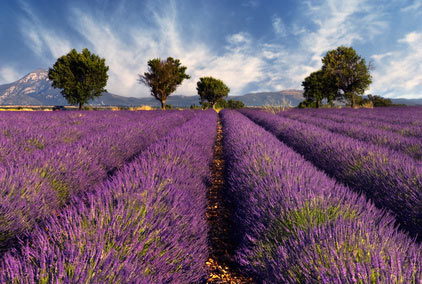 The use of flowers as perfume dates back too far to be traced by man. At one time diseases were thought to be transmitted through bad odors, which led to the use of flowers and scents to purify the air. Religious ceremonies using herbs and resins have been used since Egyptian times. Over the centuries flowers have taken on a special meaning. In soap making, these fragrances are prized and often times hard to come by when looking for the perfect scent.
The use of flowers as perfume dates back too far to be traced by man. At one time diseases were thought to be transmitted through bad odors, which led to the use of flowers and scents to purify the air. Religious ceremonies using herbs and resins have been used since Egyptian times. Over the centuries flowers have taken on a special meaning. In soap making, these fragrances are prized and often times hard to come by when looking for the perfect scent.
Today, most of the fragrances you buy are synthetic and do not come from flowers themselves. If you do find a pure flower extraction, it is often times very expensive. But using a technique known as enfleurage you can extract some of the scents of flowers right in your own home. To begin this process you will need to melt down enough solid unscented oil to cover the bottom of at least two large shallow plates. Each plate should have approximately 1/2 inch of the melted substance. The plates need to match so you can place them upside down on top of each other without any gaps. When the fat has solidified, score it in crisscross patterns and fill the space between the plates with the petals of highly scented flowers. If you would like you can add a bit of citrus peel, herbs or spice to accent the scent. Be very careful not to allow any of the plant parts to drop on the plates since they can introduce fungi that will spoil your perfume.
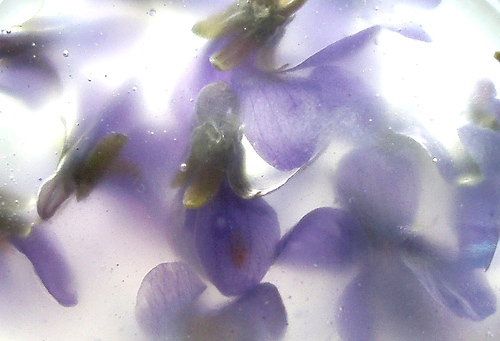 Seal the plates together with tape and put them aside for two days. After this time you should remove the wilted petals and repeat this process using fresh petals. After eight changes of flowers cut the lard and place it in several small sterile glass bottles, filling each half full. Top this off with pure ethyl alcohol or if cannot get ethyl alcohol that is pure, you can use rubbing alcohol as well. Close each of the bottles tightly and shake them thoroughly. Then place them in a dark area for about 12 weeks. You will need to shake each bottle daily if possible to blend the ingredients. When the 12 weeks are up, use a funnel with a piece of muslin placed over it to pour the perfume into a bottle. The muslin will strain out all the fat globules. Next you should add a very small amount of fixative oil as a preservative. If you prefer to measure the amount of fixative it should be approximately two drops per 1/4 cup of perfume. In this process the aroma of the petals you have chosen are absorbed by the lard and held by the alcohol. The best aromatic flowers to use are gardenias, roses, honey suckle, lavender and carnations. Any aromatic mixture must be composed carefully to achieve the perfect blend. It is best to choose one ingredient for the primary fragrance and then add small amounts of other scents to get the best results.
Seal the plates together with tape and put them aside for two days. After this time you should remove the wilted petals and repeat this process using fresh petals. After eight changes of flowers cut the lard and place it in several small sterile glass bottles, filling each half full. Top this off with pure ethyl alcohol or if cannot get ethyl alcohol that is pure, you can use rubbing alcohol as well. Close each of the bottles tightly and shake them thoroughly. Then place them in a dark area for about 12 weeks. You will need to shake each bottle daily if possible to blend the ingredients. When the 12 weeks are up, use a funnel with a piece of muslin placed over it to pour the perfume into a bottle. The muslin will strain out all the fat globules. Next you should add a very small amount of fixative oil as a preservative. If you prefer to measure the amount of fixative it should be approximately two drops per 1/4 cup of perfume. In this process the aroma of the petals you have chosen are absorbed by the lard and held by the alcohol. The best aromatic flowers to use are gardenias, roses, honey suckle, lavender and carnations. Any aromatic mixture must be composed carefully to achieve the perfect blend. It is best to choose one ingredient for the primary fragrance and then add small amounts of other scents to get the best results.
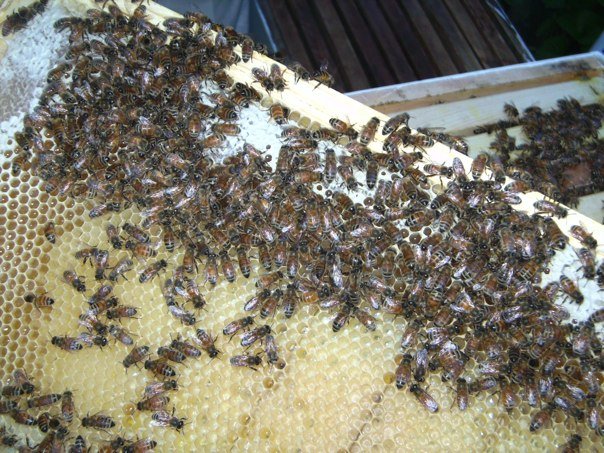 Honey has a long history in human societies around the world. It is used in various foods and beverages as a sweetener and flavoring. What is more interesting is that it also has a role in religion and symbolism sometimes being called the nectar of the gods. It is also used in various medicinal traditions to treat ailments. In fact recent studies of honey have indicated that these traditional uses actually have scientific merit. Antibacterial properties of honey are the result of the low water activity causing osmosis, hydrogen peroxide effect, high acidity, and the antibacterial activity of methylglyoxal. Because of all of that honey makes an excellent face mask.
Honey has a long history in human societies around the world. It is used in various foods and beverages as a sweetener and flavoring. What is more interesting is that it also has a role in religion and symbolism sometimes being called the nectar of the gods. It is also used in various medicinal traditions to treat ailments. In fact recent studies of honey have indicated that these traditional uses actually have scientific merit. Antibacterial properties of honey are the result of the low water activity causing osmosis, hydrogen peroxide effect, high acidity, and the antibacterial activity of methylglyoxal. Because of all of that honey makes an excellent face mask.
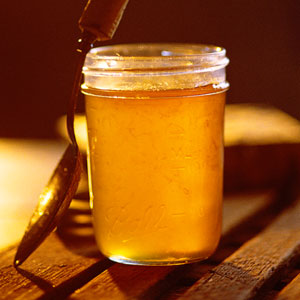 To get the most out of your honey mask, you will want to add an exfolient to the honey. I have always found that adding sugar to the honey is ideal because of the small size of the sugar grains and the fact that the sugar dissolves and washes away cleanly with just simple water. The ratio is up to you but a nice ratio of honey to sugar is 2-1. You want to wait to make the honey-sugar mix until you are ready to scrub your face as some of the sugar will dissolve in the honey if you put it in beforehand. Once you have scrubbed you face with the honey-sugar mix, let the honey sit on your face and go to work on your pours and any acne you might have. When you are done a simple wash of water will clean off the goopy mess and you will be left with a radient face.
To get the most out of your honey mask, you will want to add an exfolient to the honey. I have always found that adding sugar to the honey is ideal because of the small size of the sugar grains and the fact that the sugar dissolves and washes away cleanly with just simple water. The ratio is up to you but a nice ratio of honey to sugar is 2-1. You want to wait to make the honey-sugar mix until you are ready to scrub your face as some of the sugar will dissolve in the honey if you put it in beforehand. Once you have scrubbed you face with the honey-sugar mix, let the honey sit on your face and go to work on your pours and any acne you might have. When you are done a simple wash of water will clean off the goopy mess and you will be left with a radient face.
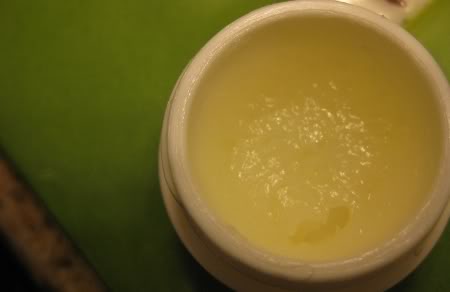 There are a lot of different things you can do with the various oils that are used in soap making. One of the easiest things is to turn a few of the best oils into an emulsion for a lip-balm or body moisturizer. The process really is simple and actually has fewer steps than making your own soap.
There are a lot of different things you can do with the various oils that are used in soap making. One of the easiest things is to turn a few of the best oils into an emulsion for a lip-balm or body moisturizer. The process really is simple and actually has fewer steps than making your own soap.
For anyone who has made a salad with an oil and a liquid, you know how oil and water can be combined into a new product. The basic process is to melt the solid oils and add them to the fluid oils. Once you have combined the oils then you can start adding different flavors or sweeteners (like honey) which have water in them. If you just want the lip balm to be plain, just add water. At this point you need to stir the fluid/water vigorously as you slowly drizzle the oil into the mixture. This should create the perfect emulsion and you will be able to chill the emulsion to form an even more solid lip balm.
Here is a simple olive oil and beeswax recipe:
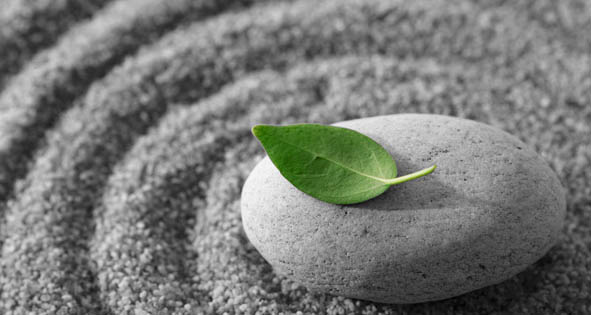 Practitioners of meditation have long believed that the centering and calming ways of their life were directly related to their mindful meditations. A recent scientific study published in Psychiatry Research: Neuroimaging shows that subjects who meditated 30 minutes a day for eight weeks had measurable increases in the amount of grey matter in regions of the brain associated with learning and memory processes, emotion regulation, self-referential processing, and perspective taking. The other surprising aspect is that the meditation not only increased grey matter in areas of the brain associated with positive aspects of our society but it also showed that grey matter was reduced in the amygdala, a region connected to anxiety and stress. A control group that did not practice meditation showed no such changes.
Practitioners of meditation have long believed that the centering and calming ways of their life were directly related to their mindful meditations. A recent scientific study published in Psychiatry Research: Neuroimaging shows that subjects who meditated 30 minutes a day for eight weeks had measurable increases in the amount of grey matter in regions of the brain associated with learning and memory processes, emotion regulation, self-referential processing, and perspective taking. The other surprising aspect is that the meditation not only increased grey matter in areas of the brain associated with positive aspects of our society but it also showed that grey matter was reduced in the amygdala, a region connected to anxiety and stress. A control group that did not practice meditation showed no such changes.
What we can find from this study is that mindfulness as slowing one’s self down, while not necessary to life, would improve brain function. Who knows to what limits we could achieve if we just spent 30 minutes a day meditating?
Fluid (water) needed: |
|
||||||||||||||||||||||||||||||||||||||||||||
The processes of making soap are all centered around the chemical process of saponification. Soap makers have for years had huge lists of SAP (saponification) tables that describes the basic process of converting fats into soap. For new soap makers, the process may seem almost like magic because of all the mathematical formulas and conversions. Really, what every soap maker is doing when he or she makes a batch of soap is stepping into an organic chemistry lab and forcing a chemical reaction to take place.
The basic ingredients in any batch of soap are a strong base (lye, caustic potash, etc), water and an oil of some kind. When you put the lye into water, the water molecules ionize the bond between the sodium and hydroxide forming: Na+(aq) + OH–(aq). The final ingredient is where the complexity and the artistry of soap making enters the equation. Most oils are comprised of triglycerides. This basically means that oils are made up of three fatty acids with a glycerol backbone. The glycerol molecule has three hydroxyl (HO-) groups. Each fatty acid has a carboxyl group (COOH), a central long unbranched aliphatic chain (saturated (CH2)n or unsaturated (CH2)nCH=CH(CH2)n) and an omega carbon at the end that has 3 hydrogens (CH3). It is in the middle chain that the properties of the oil come from. Because of the limitless number of repeats and configurations of this middle chain, there are literally an unknown number of fatty acids in the world. Fortunately for us, when mother-nature finds a formula she likes, she reproduces it quite a bit in different places. The most common fatty acids that make up vegetable and animal lipids (at least the ones soap makers are interested in) are Lauric, Linoleic, Linolenic, Myristic, Oleic, Palmitic, Ricinoleic and Stearic acids. So, it are these three ingredients, when broken down to their base molecules, that form the palette for a bar of soap.
As any kid playing with vinegar and baking soda knows, when you mix an acid and a base together, you get a reaction. When soap makers mix their lye water into a vat of oil, what they are doing is really just this simple process of mixing a base with an acid. The first thing that takes place, is that the hydroxide (OH–) attacks the carboxyl group of the fatty acid which is attached to the glycerol. This causes the carboxyl to break away and form carboxylic acid. The lye base is attracted to the carboxylic acid and forms a salt with the aliphatic chain hanging off the side. At this point a single molecule of “soap” has been formed. This chemical reaction continues until all the lye or fatty acids are spent. Soap makers can play with this knowledge and discount/superfat the soap. That is to say, they can reduce the amount of lye they add to the oils so that the reaction stops before all of the oil has been converted to soap. While this saponification process is going on, a lot of heat is released during each of the reactions. This is why soap goes through a “gel” phase before it hardens into its final product.
In a lot of my soap making videos, I simply show myself adding a particular fragrance to the soap without explaining much about the different options there are to making your soap smell like it just came out of a designer spa but at a far cheaper price. In this article I hope to explain some of the basics to adding fragrance to your soap so that you can feel more confident to experiment with your own scents as you join the wonderful community of soapmakers.There are basically two chances you will have to add fragrance to your soap. The most common way is to add either a fragrance oil or a pure essential oil to your soap. The second way in which to add scent to your soap is to use various aromatic liquids like tea or coffee. There is a third way that is sometimes suggested by adding herbs or flowers to your soap but I have never had much luck with this method and if the cuttings are not heat safe, you will find most of the time they end up being burned by the saponification process.
There is a long debate in the soap making community between those that use fragrance oils and those that use essential oils to scent their soap. The basic difference is that one is considered synthetic and the other is considered natural. In the United States fragrance oils are formulas or special combinations of chemicals or essential oils that produce a unique scent and can be protected by the FDA. On the other hand essential oils are tend to be a single ingredient that is extracted from a plant or other piece of verdure. Because the ingredients are known the essential oils tend to be considered more natural. The decision to use either material is really up to you but here are some of the facts you will need to know for soap making.
Fragrance oils are by far cheaper to use and have a far wider variety of scents you can add to your soap. The drawback to using fragrance oils is that some of the oils can lead to a failed soap batch. Because the ingredients are often not disclosed, it is hard to tell the probability of failure of your soap when adding a new fragrance oil. That being said, I have used fragrance oils for some of my soaps and have never had a batch seize on me.
Essential oils are considered more natural but the process by which they are extracted may be anything but natural. So if one of the reasons you are using essential oils is to be greener, be sure to know how the oil was extracted and be sure the plant that is providing the oil is being harvested in environmentally sustainable ways. Essential oils provide a stronger scent and often times last longer in finished soaps. If you plan on having your soap giving a room aroma for months and only on display, you’ll more than likely want to uses some combination of essential oils. Another benefit of essential oils is that they are a known ingredient and because of that the probability of a failed soap batch is known ahead of time. Unfortunately, because some plants don’t offer much in the way of oil getting your hands on some essential oils can cost an arm and a leg.Essential Oils that WorkHere is a list of essential oils that tend to withstand the saponification process quite well and come out smelling like what they did before they were turned into soap:
How much should I use?Probably the most important question to ask is the amount to use to get the scent you want after your soap has set. This is actually a personal question for you to answer. It will depend on how the soap is being used (or not used). If the soap is merely for decoration, then you can go ahead and load it up with fragrance. On the other hand if you actually want to use the soap, you need to be aware of how the fragrance/essential oil you used will react to your skin. Having a cinnamon scented soap for general shower use might not be a good idea but having it for a foot wash would be ideal. I tend to follow the general rule that for every 30 oz of soap oil I used 1.5 to 2 oz of fragrance. I’ve found this gives me enough scent to come through the soap making process while still being easy on my skin.The next most important question is that of timing. This is actually a simple answer. Unless otherwise specified in a recipe, the fragrance (and all other additives like color, herbs or old soap pieces) right before the soap has reached full trace. Once you add the additives only a few more mixes of the soap is needed. If you mix more, there is more of a chance the things you just added will seize your soap or cause it to streak.
Another way which you can add scent to your soap is by using a special tea or coffee as the liquid base for your soap. When you are making the liquid, you will want to make sure you make it very strong. This liquid is not for drinking and would probably taste horrible because it is so strong but what you are after are the qualities of the tea/coffee/juice as well as the scent. I’ve found that sage tea makes a good scent as well as coffee. The only thing to be aware of is that theses liquids can change the pH of the water. This will effect how your lye processes the oil. More often than not the liquid will tend to become more acidic. This in turn will cause a stronger reaction when you add the lye to your water.As you make more and more soap batches, you will become more comfortable adding fragrance to your soap and coming up with fabulously creative ideas! Good Luck!
Fluid (water) needed: |
|
||||||||||||||||||||||||||||||||||||||||||||||||||||||||